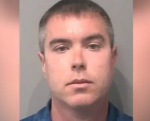(INDIANAPOLIS) – Legislators have wrapped up a six-day blitz of redistricting hearings, a day before the release of census data that will shape whom you get to vote for in next year’s elections.
About 150 people jammed the House chamber at the statehouse for the ninth and last in a series of town hall meetings on the process of drawing new maps for Indiana’s nine congressional districts, 50 state Senate districts and 100 state House districts. Nearly all who testified were advocates of redistricting reform, and most were openly cynical about the process, cheering witnesses who predict
a Republican gerrymander, and complaining that the hearings are taking place before there are any maps to look at.
House Elections Chairman Tim Wesco (R-Osceola) plans to hold a hearing around mid-September on the new maps, with the Senate to follow suit after the House passes them. But Senate Elections Chairman Jon Ford (R-Terre Haute) says those hearings will happen at the statehouse, not a repeat of the nine-city barnstorming tour their committees began last Friday. And Wesco says he doesn’t know how long the maps will be publicly available in advance of the hearing.
Activists called for anywhere from a week to a month to review the maps before those hearings. Wesco says the longer the delay in passing maps, the harder it will be for county clerks to make plans to get the right ballots to the right precincts before the May primary.
Activists and legislators in both parties all say the prime goal for the new maps should be to keep “communities of interest” such as cities, counties, or school districts, undivided, while following federal requirements to avoid diluting minority votes. But Democrats and hearing witnesses accused Republicans of planning to slice data to maximize the number of districts they can count on winning. Several witnesses charge the current maps, passed in 2011, are unfair, creating too many safe districts and denying citizens a true voice in who represents them.
In 45 congressional elections on the current maps, just three were decided by less than 10 points, while three districts were never decided by less than 23.
Democratic strength has been overwhelmingly concentrated in a few large cities and university communities. Last year, former president Donald Trump carried all but five of Indiana’s counties, and Republican Governor Eric Holcomb won all but three.
Earlier this year, activists formed a nine-member shadow redistricting commission with three Republicans, three Democrats, and three independent or third-party members. That panel plans to solicit maps from citizens and pick one to submit to legislators with a challenge to pass it instead of drawing their own districts. Advocates and Democratic legislators argue it’s an inherent conflict of interest for the General Assembly to draw maps for itself.











